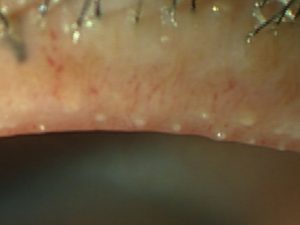A proposed scale to grade the severity MGD (featured in AJO)
- informaiton , research
- August 16, 2016
How is everyone dealing with these hot days of autumn?
As I write, the Olympics in Rio are underway and I’m on the edge of my chair watching events live (without knowing who will win!).
Tonight, a typhoon is almost upon us here in the Kanto region, so we have to be on the lookout.
Today, I’d like to talk about a study involving 5 physicians from the LIME Working Group that was recently published in AJO.
Development of Definitive and Reliable Grading Scales for Meibomian Gland Dysfunction.
Arita R, Minoura I, Morishige N, Shirakawa R, Fukuoka S, Asai K, Goto T, Imanaka T, Nakamura M. Am J Ophthalmol. 2016 Jun 23. pii: S0002-9394(16)30298-7.
In the past, a patient could be diagnosed with meibomian gland dysfunction (MGD but there were no set standards someone could use to clinically classify the severity of MGD. Grading scales did exist, but they were extremely confusing and almost impossible to use in practice. In response, the study above created a scale and the study determined the reliability of that scale.
Four types of findings at the eyelid margins were identified in 226 photographs and 2 types of findings from meibography were identified. Findings at the lid margins were scored from 0-2 and meibography findings were scored from 0-3 to create a grading scale. Grades based on this scale were checked by ophthalmologists and physicians who were not involved in devising the scale. On the whole, this “labor-intensive” work was quite daunting. The article describing the study swelled to 12 pages in AJO (which may have earned us the enmity of the editors). The study took 3 years of work and was started by research teams from the University of Tokyo’s Department of Ophthalmology and Santen Pharmaceutical. At one point in those 3 years, physicians from the LIME Working Group were asked to help and we became co-authors of the study. In the very final validation, we had to find a specialist who was not a co-author to check our work, and Dr. Sakimoto accepted. The work was truly a flurry of effort.
We will now be determining the true usefulness of our scale, i.e. can it be used to determine the effectiveness of a given treatment? When the paper is finished the work isn’t over – instead, that’s when the work truly begins, so we’ll be diving in without a moment’s rest!
Access to the article is free article, so if you’re interested, feel free to download a copy!
http://www.ajo.com/article/S0002-9394(16)30298-7/pdf

Plugging grade2


